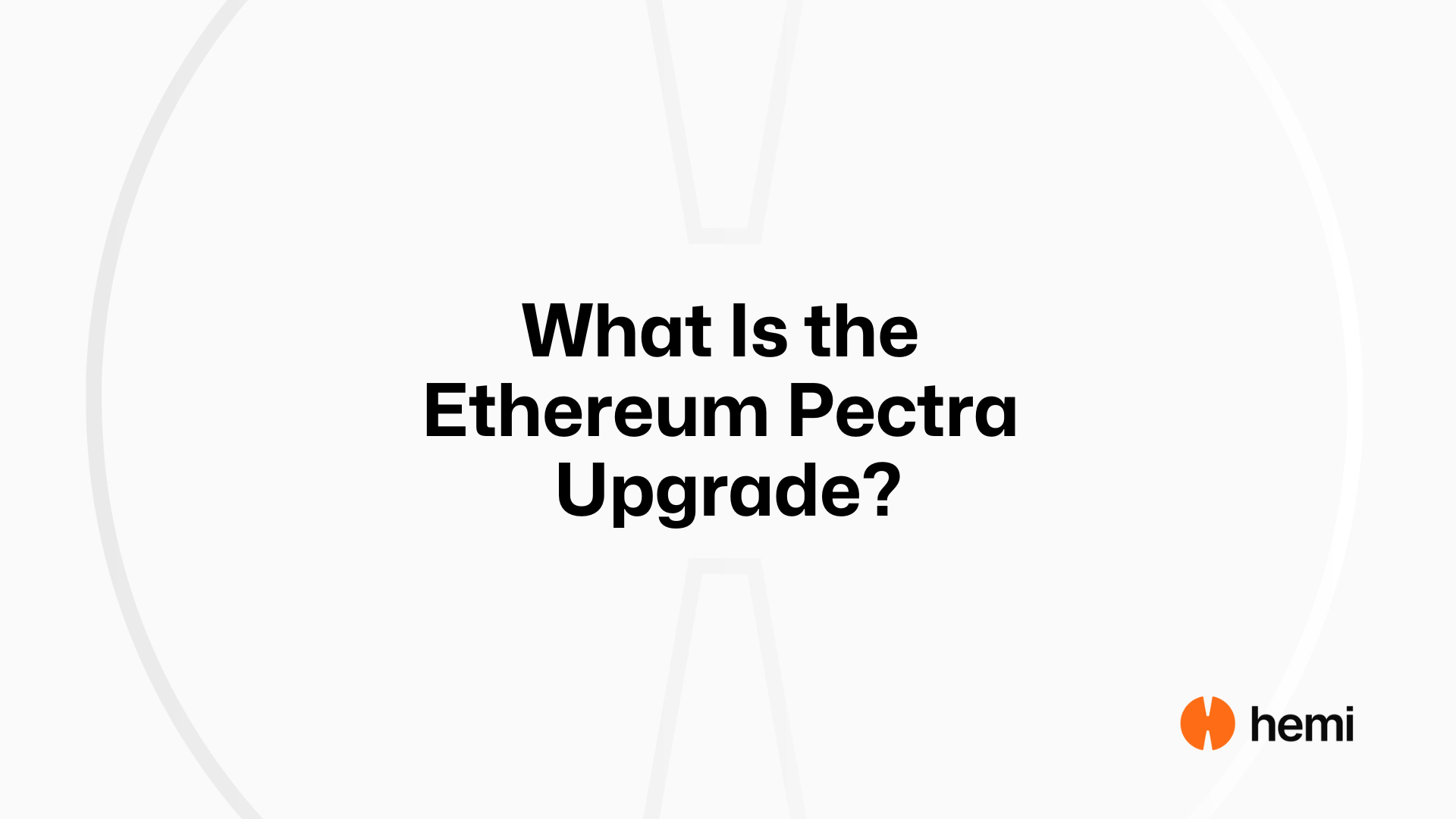- Bitcoin
- Ethereum
- Learn Center
- April 2, 2025
What Is the Ethereum Pectra Upgrade?
What you need to know about the new Ethereum Pectra upgrade.

Ethereum is gearing up for another major upgrade—called Pectra—set to follow the Cancun-Deneb (Dencun) upgrade that brought proto-danksharding to mainnet in March 2024. While Dencun focused on scaling the network through cheaper blobs for rollups, Pectra builds on that work and lays new foundations for the next stage of Ethereum’s roadmap: a more modular, user-friendly, and secure ecosystem.
Here’s what’s coming in Pectra, why it matters, and what to watch for.
What Is the Pectra Upgrade?
Pectra is a combination of two upgrades: Prague on the execution layer and Electra on the consensus layer. Together, they’re expected to bring a wide range of technical improvements across validator operations, wallet usability, smart contract functionality, and cross-chain compatibility.
It’s currently targeted for late 2024 or early 2025, but as always with Ethereum, final dates depend on how testing goes.
Key Features of Pectra
1. EIP-7251: Raising the Validator Limit
Right now, each Ethereum validator is limited to 32 ETH. That means anyone staking large amounts must run multiple validators, which increases overhead. EIP-7251 raises this cap—possibly up to 2,048 ETH per validator. It’s a big change that could streamline operations for large stakers and improve network efficiency.
2. EIP-3074: Delegation and Smart Wallet Features
EIP-3074 introduces a way for externally owned accounts (EOAs)—regular Ethereum wallets—to delegate control to a contract. This will make it easier to batch transactions and use features we now associate with smart contract wallets (like session keys or account abstraction) without changing how wallets are structured.
It’s a bridge between today’s basic wallets and the more powerful smart wallets expected to dominate in the future.
3. PeerDAS: Laying the Groundwork for Full Danksharding
Pectra continues work on Ethereum’s long-term scaling plan. With PeerDAS (Peer-to-Peer Data Availability Sampling), nodes can efficiently verify that data is available without downloading all of it. It’s a critical step toward full danksharding and long-term scalability.
4. Other EIPs Being Considered
- Improvements to signature aggregation
- Enhancements for light clients
- UX-focused features for dapp developers and users
- Refinements in how validators communicate and sync
The final EIP list for Pectra is still being discussed. Ethereum core developers are expected to lock it down in the coming months.
Why It Matters
Pectra is less flashy than upgrades like Merge or Dencun, but its impact could be just as meaningful. It focuses on:
- Making Ethereum easier to use for both developers and end users.
- Reducing technical debt by introducing more modular and scalable design.
- Preparing for full danksharding, which will eventually enable massive throughput for rollups.
- Strengthening validator operations, especially for institutional and high-volume stakers.
It also signals Ethereum’s maturing architecture. Instead of single-purpose upgrades, Pectra delivers incremental progress across many parts of the stack.
What Comes After Pectra?
Looking ahead, the Ethereum roadmap still includes:
- Full danksharding, building on Dencun and Pectra.
- Verkle Trees, to help shrink node sizes and improve sync.
- Statelessness, reducing the cost of running full nodes.
- Continued progress on account abstraction and user-friendly wallets.
In short, Ethereum is moving steadily toward a future where it’s cheaper, faster, and easier to use—without sacrificing decentralization or security.
Final Thoughts
Pectra might not make headlines like The Merge, but it’s an important chapter in Ethereum’s ongoing development. It clears out pain points, builds in flexibility, and moves the chain closer to its long-term goals. If you’re a builder, a staker, or just an interested observer, keep your eye on this one.